#MediaConvergence
Explore tagged Tumblr posts
Text
The Impact of Convergence in Daily Media Habits
I have noticed an increasing dependence on media convergence in my personal media consumption in recent years. The convenience of having all media available at my fingertips is incredible, and as humans we are so susceptible to finding the path of least resistance and taking the easy route. However, between the threat of losing locally produced media content and the echo chamber effect of receiving news from the same source, it is never more important to consider the importance of applying critical thought in personal media use.
The world has undergone lightening-fast transformations in the growth of technology during the ever progressing digital age. Traditional broadcasting faces challenges to survive in the modern world. It is critical that traditional sources adapt to maintain diverse media content in an online age. For a Canadian example, I recall watching many hours of broadcasting from the Canadian Broadcasting Company (CBC) when I was a child. At that point in my life, my media consumption was almost exclusively Canadian; watching episodes of shows on CBC such as “The Littlest Hobo” and “This Hour Has 22 Minutes” provided almost exclusive regulated Canadian content and allowed me to view the world through more of a local lens. Nowadays, my media content is from a vast amount of sources, as shown on my log. While this does have the benefit of providing a broader world perspective, the vast majority of these are not local, or even Canadian, sources.
Another concern with media convergence is the issue of an echo chamber effect, where the content the audience is exposed to is catered to their previous consumed information. This plays a significant influence on the spread of information, particularly through social media. Even with deliberate choices for diverse sources, this can cause bias in information gathering and education online. Therefore, it is always important to apply critical thought and consider the sources of the media which we consume.
2 notes
·
View notes
Text
What is Tumblr’s connection to Media Studies Concepts?
1. Media Convergence: Tumblr can be used and downloaded on various devices, spanning from
A phone
Computer
Tablet
GIFs or photos edited and created on Tumblr can be sent via messages, communicating emotion, and expression that originated within the platform.
Tumblr has the ability to converge into a radio where music can be played or camera to capture the moment.
2. Participation: Tumblr is a participatory and community based app, if users did not engage, post, or share content the app would not function within its feed, and content assess-ability would not exist.
3. Remediation: Within Tumblr subcultures and used / borrow content from one another making it new by adding filters or photoshop through the idea of “refreshing” original forms of media. The idea of one medium borrowing from another is prevalent throughout Tumblr’s design.
#mediaconvergence #participation #remediation
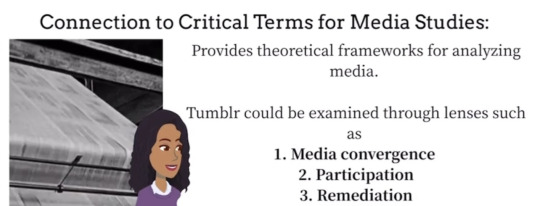
0 notes
Text
Media Convergence in Baseball & its Effects
Media Convergence is a wave in many forms of todays’ digital age. Over the years as our digital advances have evolved sports have been going step by step to stay up to date. One of the most prominent digital advances that have been made within sports are through Media Convergence. This is almost second nature to any consumer however is a working function behind our entertainment success. In Chicago, our beloved Chicago Cubs have taken a new step towards Media Convergence. Through Marquee Network we have seen the Chicago Cubs displaying their games over their television channel visually along with the announcers through audio creating a cross-platform experience for their viewers. Being able to create this experience through sports is second nature but is all through the advancements of Media Convergence throughout the game of baseball.

Creating a culture through Media Convergence comes with many challenges for these changing companies. When the Chicago Cubs decided to leave WGN for their games, which is free to those with cable, and create a subscription based channel in Marquee Network there was a large drawback in this culture shift. Any change in culture no matter the extremity will be ongoing and complicated. As stated by ‘awful announcing’ Tom Ricketts the Chicago Cubs President was booed at Cubs Con after announcing this change as Cubs fans were accustomed for decades watching their team for free on WGN and CSN. Showing how culture changes is always on-going and difficult. When one's routine or commonalities in their day to day/ year to year life changes people tend to get defensive. This is shown in small culture changes similar to marquee network or even larger culture changes through social right movements and/or covid-19 mandates that are magnified in regard to culture change.
Selective exposure needs to be taken into account in all situations that involve culture change. Selective exposure can affect the perception of any change in culture/ any new no matter how extreme or basic the news may be. Referencing when the Chicago Cubs made the change to Marquee Network for their broadcast the media that was consumed greatly dictated the view of this change in culture. One could view from a perspective reporter within the Chicago Cubs that has a link to their interest, who views the change as great quality and taking the step in the direction of becoming more prestigious and innovative within the game of baseball. However the same event could be viewed by a Chicago Cubs fan on twitter with thousands of viewers while his tweet goes viral stating how the move breaks culture that has been around for tens and tens of years. Viewing this as a disgrace to the franchise saying how their only objective is increasing the dollar sign with no true care for their fans at the end of the day. However one feeling about this cultural change within the media convergence the Chicago Cubs have done, the concept of selective exposure is subconsciously going to be used by many fans to justify their reasoning to be happy, mad or any emotion that is being felt. Seeking these stories, messages and more that correspond with their beliefs is going to create a snowball effect within the community sharing that viewpoint together. Selective exposure is dangerous in this situation but all, if one wants to be well educated, checking multiple viewpoints from multiple outlets is vitally important. Certain outlets can have a bias due to being corresponding to specific personnel and/ or companies, for example the Chicago Cubs or anyone within the Chicago Cubs in this situation.
Media Convergence is a growing function in our lives, with the new wave of mass media there will not be any sign of media convergence slowly down according to European Commission's research results. Accepting this will be important to everyone. Media Convergence itself is a heavy concept that carries many sub categories alongwith. As covered earlier, there will always be cultural change which comes with ongoing changes and will always be complicated. Cultural change is never easy which can lead to selective exposure to make one's personal choices or beliefs feel more justifiable. This can lead to a large snowball effect and rabbit hole that leads to lack of perspective on any given situation which is dangerous. Learning all ends will help lead to a clear and educated decision. Media convergence is not going away in the game of baseball along with all forms of day to day life so we might as well learn to live with all the snowball effects that come with it to create a better digital and literal world for us all. Go CUBS!
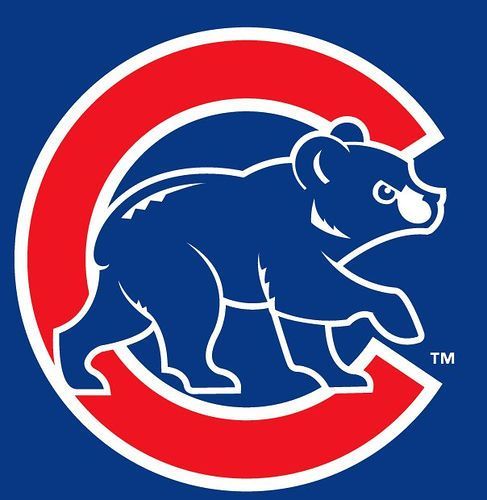
2 notes
·
View notes
Text
Adapting to Adaptations
Some people say this is the golden age of television. Netflix Hulu and Amazon are developing their own original series to much critical acclaim and much of what spring-boarded them into success was adapting pre-existing works from other formats. House of Cards, Orange is the New Black, and Hemlock Grove, some of Netflix’s earlier and more successful series were all based on books, and more and more cable networks are optioning scripted series to compete with streaming services and the likes of HBO and Showtime. Others say that we’re in an endless age of recycling the same thing over and over. That the lack of originality is killing more creative works by sucking all the oxygen out of the room. When Disney, a company already astute at milking series for all they were worth, acquired the mega-franchises of Marvel Comics and Star-Wars, they guaranteed that both creative universes would live forever. This is great news for the fans, who can now look forward to reboot after reboot of their favorite stories, but when theaters have to compete for every hard-earned dollar an increasingly selective audience will spend at the box office, rehashing the same blockbusters repeatedly means that other, more esoteric movies will not even be shown. Despite the challenges these trends present for new writers, I feel that overall, the proliferation of adaptations and the fragmentation of the media market are good for creators.
Let me explain why.
When I was growing up, three media franchises had a profound effect on me. Looking back on them now, I realize they each had their own unique gifts to give me, not only as a consumer of stories but as a student of storytelling.
FRANCHISE 1: Pokémon - Video Games and World Building serve as a springboard for fiction.
Featuring a video game world of lavish detail and intricate mechanics for its time, the Pokémon franchise was created by a game journalist named Satoshi Tajiri as a passion project. Pokémon has turned into one of the most successful video game and media franchises in the world.
The concept of the games is simple, Tajiri wanted to capture the spirit of insect collecting that he had enjoyed as a child, but with a fantasy angle. In the game, children go on quests to capture and train “pocket monsters.” Elemental beasts that inhabit the world instead of wild animals. Pokémon trainers can trade their Pokémon with each other or pit them against one another in (kid friendly) gladiatorial battles. The battles are turn-based and much of the strategy, like in other RPGs requires you to play to the monsters’ strength or weakness types and stats. For example, Fire beats Grass, etc.
My first experience with Pokémon though was not the video games, but with the Trading Card Game, which brought the idea of strategic collecting and battling to the real world. I became interested in the show and games shortly after that, but if it weren’t for adaptation of the Pokémon games into other media, my experience would have been different.
The exploration of the created system inspires the player to imbue the tasks they undertake with added meaning or drama. Building on the fundamental plot of the video games, the player enhances the addictive gameplay with personal meaning. Fans of the series, loving the world, creatures and concepts Tajiri created, went on to adapt the world of Pokemon into Manga (comics), Anime (animated TV series), Feature Animated Films, a Wildly popular Trading Card Game. The scaffolding provided by Tajiri provides the basis for players, myself included, to attach their own epic quests to the repetitive strategic tasks of the gameplay. The video game mechanics lend themselves to replay value and inspire storytelling through other media, in the same fictional world.

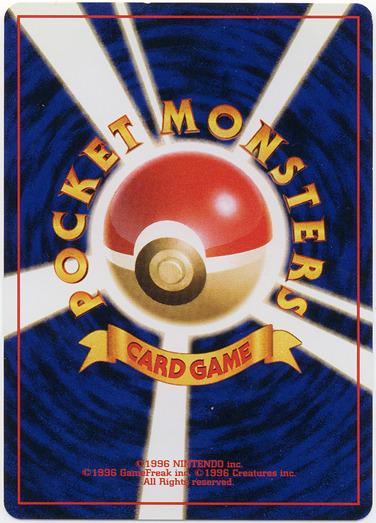
FRANCHISE 2: Harry Potter - Addictively good fiction leads to empire building franchises; If you tell a good story, they will come.
I don’t need to tell you what Harry Potter is, or how huge a phenomenon it is. Really, Harry Potter and Pokémon need little to no introduction. Still, the fictional world of Harry Potter is compelling on multiple levels. It’s compelling because it follows the typical hero’s journey in a unique and more modern way, drawing on other classic fantasy works already in the collective cultural deposits and making them accessible to everyone. It’s compelling because author J.K. Rowling’s world-building is as in-depth as Tajiri's, allowing fans to immerse themselves in her created space and stake out their own nooks to explore through fanfiction, and cross-media adaptation. Third, the story of Harry Potter is compelling because, in many ways, it mirrors the journey of its creator. Harry Potter is a rags-to-riches, coming-of-age story about a young boy who rises out of a lowly situation to become famous and beloved. Similar to the eponymous hero, J.K. Rowling brought the story of Harry Potter to life as a struggling single mother who was rejected by multiple publishing houses, only to turn it into one of, if not THE most successful book series in the world. The smash success of the books spawned adaptations to film, video games and various additional merchandise, such as board games, clothes and toys inspired by the “Wizarding World.”
Rowling’s modern-fantasy reimagining of the Hero’s Journey has captured the imaginations of millions. Like Pokémon, Harry Potter is an excellent example of world building. Unlike Pokémon, the mechanical structure of media like video games was not the main driver of its success but contributed to that success and was further built upon as created works proliferated, inspired by the excellent fiction writing skills of J.K. Rowling.
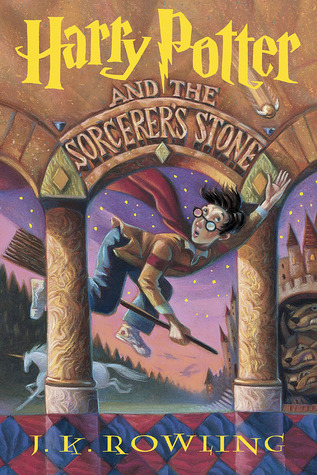

FRANCHISE 3: Middle Earth – World building at an unparalleled level, coupled with excellent fiction writing and adaptation skills, leads to the creation of a classic.
J.R.R. Tolkien’s story-universe Middle Earth, the setting of famous The Hobbit and The Lord of the Rings tales as well as many other stories is one of my most beloved worlds to explore. I first encountered Middle-Earth because of adaptation. I was first introduced to The Hobbit through a radio dramatization of the book. After that, I read the novel and later, The Lord of the Rings. I listened to the audiobooks, watched and own all of the movies, and have played several of the video games. The video games that I felt were the worthiest contributions to the franchise were the ones that were either direct adaptations of the source material or entirely new works based on the same world. In recent news, Amazon will be creating a new series based on the world of Middle Earth.
Tolkien’s world-building has inspired many. Aside from the various adaptations mentioned already, it is also credited as the inspiration of the popular tabletop RPG Dungeons & Dragons, not to mention the countless “high-fantasy” or “sword and sorcery” titles that have followed and owe it a debt. Tolkien did not create The Lord of the Rings in a vacuum, however; he borrowed heavily from Anglo-Saxon mythology, Norse Mythology, and Judeo-Christian Mythology. Interpreting and compiling them with his love of languages, Tolkien labored to create his own languages and build the world and peoples that would have created them. The point is, that Tolkien himself was an “adapter,” in fact, he translated one of the versions of Beowulf that we have today. Tolkien’s adaptations spawned other adaptations of his work and inspired many others. The reason his works are so beloved and of such high quality is because of his fantastic world-building abilities, his ability to spin a tale, and his own skills at riffing on the cultural heritage available to him. This combination ensures stories that a wide audience can engage and explore.
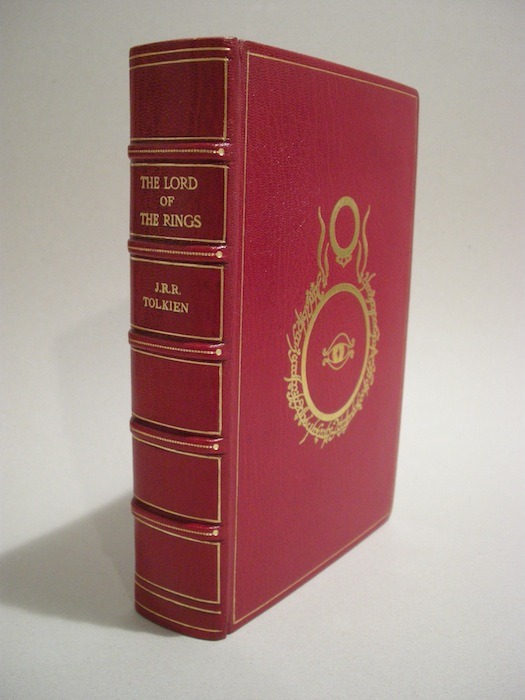
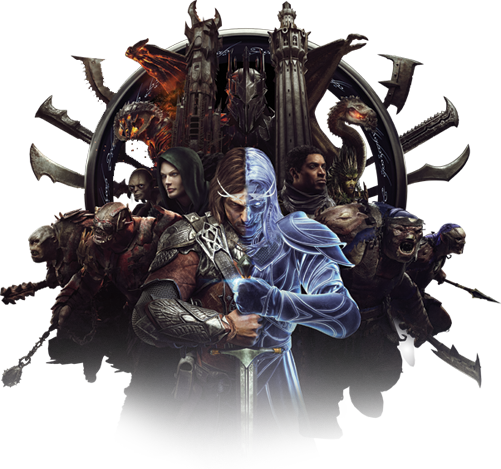

The idea that this increase in rebooting or adapting of existing works is a new problem, or even a problem at all, is a fallacy. There is “nothing new under the sun,” as the saying goes. The increased reimagining of work is to be welcomed. It provides an opportunity for new creators to flex their muscles while paying tribute to the works they admire. It could be a problem if, as stated previously, adaptations were all that was being created at the expense of all other content. Fortunately, though, the media market is shifting, and there are now more ways than ever to produce and publish content. So, let the major production companies rehash the stories that we already know and love. They have money to do it right and to do them justice. The rise of new streaming services and original television or web-series programming empowers creators to produce their own original works and expose them to the public eye in due time. I, for one, am glad to be along for the ride.
1 note
·
View note
Photo


Media Convergence, in a much simpler words, it is the merging of a distinct technology in to one. Media Convergence is something that is very noticeable in these times because of the technological changes it makes in our society which leads us to the question, how does media convergence affects the print and broadcast media? Media convergence can be a very positive thing because it shows the growth or the development of our society in accordance to technology. We can have an infinite acces to media contents. It also created a lot of new jobs which gave an opportunity to a lot of people but unfortunately, it has led to the slow death of print and broadcast media. People have already lost their interest in buying newspapers which comes with a price. People stopped listening to actual radio. People stopped watching news on television. These are all happening because of media convergence. Why? Because people prefer easier access which they can have using their smartphones: a product of Media Convergence. (170 words) Photo (c) Pinterest & Tumblr
1 note
·
View note
Photo

@stlawrencecollege #SLCMedia class is learning about #mediaconvergence #oligopoly and the funniest words in the English language. #Squiggly was my favourite suggestion. https://www.instagram.com/p/CH_L1IEAdYA/?igshid=4kq3whcuxxir
0 notes
Text
Bagaimana Jenkins Menyikapi Konvergensi?
“Convergence does not mean ultimate stability or unity. It operates as a constant force for unification but always in dynamic tension with change. . . . There is no immutable law of growing convergence; the process of change is more complicated than that."
Demikianlah kalimat yang dikutip oleh Jenkins dalam tulisannya yang berjudul "Worship at the Altar of Convergence". Konvergensi menjadi fenomena yang berkelindan dengan banyak istilah paradoks jika melihat kenyataan yang ditegaskan dalam kalimat tersebut. Bahwa konvergensi secara konstan bersifat dinamis pada pelbagai derajat perubahan. Bahkan konvergensi itu sendiri oleh McLuhan juga merupakan sebuah paradoks, dengan mengaitkannya pada konsep medium is a message sebagai sebuah leburan di tengah pengkategorisasian dalam sistem masyarakat.
Kembali pada konteks perubahan sebagai keniscayaan dalam konvergensi, perubahan ini menuntut setiap pemain mengambil langkah sigap, beradaptasi dengan situasi yang ada. Memang beberapa contoh yang penulis berikan sebelumnya tampak konsisten menyudutkan konvergensi dalam intervensinya mengubah tatanan sosial dan budaya masyarakat. Namun ternyata Jenkins memilih mengambil sikap lain terkait fenomena ini.
Dengan alasan kritik tidak dapat diajukan jika belum memahami sepenuhnya konsep konvergensi, Jenkins mengajak kita untuk mengambil sudut pandang lain dari konvergensi, yakni pada proses yang dilalui macam-macam manusia dengan perannya yang berbeda pada kontestasi media dan konvergensi. Seperti perjuangan pengiklan meraih pasar, cara seniman bercerita secara kreatif, pendidik dalam menjangkau komunitas, kelompok agama dalam menampilkan kualitas budaya, hingga komunitas penggemar dan penggiat media kreatif, yang keseluruhannya berada dalam realitas konvergensi.
Pandangan yang memang sesuai dengan tujuan Jenkins untuk tidak mengkritisi medium dan konvergensi yang terjadi, melainkan untuk mendokumentasikan perspektif yang bertentangan mengenai perubahan media. Jika direnungi, sikap Jenkins ada benarnya. Jenkins yang tidak mengkritisi bukan menjadikannya sosok yang tidak kritis. Justru daya kritisnya tertuang dalam sudut pandangnya yang berbeda yang bermanfaat dalam mengasah kemampuan observasi kita sebagai pemain, dalam arena pertarungan antara konvergensi medium, konten, dan partisipasi aktif manusia.
Intan Khasanah - 1406556261
Sumber:
Jenkins, Henry. (2007). Introduction: "Worship at the Altar of Convergence" : A New Paradigm for Understanding Media Change. Bry-sur-Marne (FRA): INA Editions. Retrieved 10 February 2018 from https://nyupress.org/webchapters/0814742815intro.pdf
Federman, M. (2004, July 23). What is the Meaning of the Medium is the Message?. Retrieved 10 February 2018 from http://individual.utoronto.ca/markfederman/article_mediumisthemessage.htm
#SPIK600087#mediaconvergence#mediakonvergensidanpraktik#komunikasi#media#konvergensi#media convergence
3 notes
·
View notes
Text
media(log) : It’s Super Effective!
Hi!
I can’t emphasize how much I like to read. I remember back in high school when I first read The Alchemist by Paulo Coelho and it became my gateway to the world of literature. Before that, reading for me is just a tedious task that I’ve never enjoy that much. Once I found the joy in reading and the infinite possibilities it can offer, it becomes an integral part of my life ever since. What book or piece of literature influences you the most? Let me know in the comments below.
Why I brought up my first reading experience in the first place? Because I want to illustrate how can one piece of effective writing impacts me for the rest of my life. Well, you can argue that in this subject we supposed to learn how to write blog post effectively, but its a piece of writing nonetheless. For me, learning how to write starts with reading effectively. Think of that piece of literature that influences you the most. Why it become so influential to you? Does it speaks to you in so many levels? Does the story it offers relate to you and your problems?
Once you’ve identify the structures of an effective piece of writing, the next question should be “Can I produce something of an equal value?” Its a similar question you’re asking yourself after you watch a good movie or an artsy instagram post. There’s a high probability that you can do it, especially in the times of social media and youtube’s how-to and instructional videos. More on that topic on later posts.
I’m not going to refer much to Darren Rowse’s post about signs of an effective blogpost in this matter, but I like to discuss about what makes writing so effective in your opinion, based on our subject of course. In fact, does my blogposts counts a an effective blogpost? There’s so much to be discussed!
Cheers,
Aditya
#spik600087#mediakonvergensidanpraktik#komUI2016#kelasB#irwansyah#mediaconvergence#media#write#reading
1 note
·
View note
Photo

Pernahkah kamu menghubungi keluarga, teman, atau kerabat menggunakan surat? Hal ini terjadi sekitar belasan hingga puluhan tahun yang lalu. Pada saat itu surat menyurat masih menjadi suatu alternatif pilihan untuk berkomunikasi dengan orang yang terpisahkan jarak geografis satu sama lain. Namun bayangkan saja jika saat ini kita masih berkomunikasi dengan orang lain menggunakan surat, proses penyampaian informasi tidak akan dapat berjalan secepat dan selancar saat ini. Kita harus menunggu surat kita sampai kepada orang yang kita tuju, kemudian orang tersebut membalasnya dan kita masih harus menunggu surat balasan tersebut sampai kepada kita. Maka dari itu, surat sudah sangat jarang digunakan lagi pada saat ini.
Manusia sangat diuntungkan dengan adanya inovasi yang dapat menggantikan surat menyurat karena kita dapat berhubungan dengan orang lain secara cepat, intens, dan dengan biaya yang tidak mahal. Kita bisa menggunakan email, SMS, chat, dan sebagainya. Ditambah lagi, saat ini kita dapat bertukar pesan secara berkelompok dengan adanya group chat. Hal ini pun mengubah kebiasaan dan hidup manusia. Manusia sudah tidak membutuhkan amplop dan perangko lagi, yang mereka butuhkan adalah smartphone dengan pulsa dan internet di dalamnya. Manusia pun tidak perlu untuk menunggu datangnya surat selama berhari-hari, karena dengan sekali klik, pesan yang ingin kita sampaikan kepada seseorang akan langsung terkirim. Fenomena ini dapat dikaji dengan gagasan McLuhan “medium is the message”. Konsep “medium is the message” berbicara tentang bagaimana suatu karya atau inovasi dapat mempengaruhi dan membuat perubahan dalam kehidupan manusia.
Selain itu, sekarang ini melalui email, kita juga dapat terhubung dengan berbagai macam fitur, seperti drive untuk menyimpan file, untuk membuat formulir atau kuesioner, kita juga dapat menyimpan foto, calendar untuk menandai jadwal penting kita sehari-hari, terhubung dengan media sosial, dan lain sebagainya. Dengan begitu, kita sudah mendapatkan berbagai macam fungsi yang dapat memudahkan kehidupan hanya dengan satu macam teknologi. Hal inilah yang disebut dengan konvergensi media, yaitu pengintegrasian media-media menjadi satu. Tentunya, hal ini sangat memudahkan kehidupan manusia karena kita tidak perlu repot-repot dan cukup menggunakan satu platform yang bisa mencukupi kebutuhan kita.
Sumber gambar : http://www.pinterest.com
- Izza Namira (1506736442)
1 note
·
View note
Text
My Media Usage Part 1
Media can be consumed under numerous platforms and avenues to deliver content that suits the agenda of the media organization. Media can be digested through TV, newspapers, articles on websites, apps for the smart phone and the list continues. Growing up as a child, we watched the news at 6PM. It was “against the law” to speak during the news hour (similar to how I watch Game of Thrones - no sounds, no coughing, no talking is allowed, haha). Living alone makes it easier.
Media convergence has played a huge role in my life.
I no longer live in the same house as my parents so I don’t have to watch the news hour and only consume media during this time frame. With the advent of the Smartphone, it allows me to be able to watch, listen or read to whatever wherever from nearly any media source in any part of the world at any time of the day or night. I am not restricted to 6PM news hour like we were when I was a kid.
This truly allows the end user to be able to customize their media consumption to suit their own needs and requirements. I no longer have to wait until 6 to watch to news. I no longer have to listen to segments that do not interest me or provide little of value to me. I can pick and choose what I want to read and when I want to read it. I find that I read more than any other format to consume (IE: video, audio, etc). And I find I pick only things that interests me. I do find that having the ability to have multiple sources (IE: CTV, CBC, Big Think, etc) that I am able to read different views and opinions on the same subject matter. This helps to understand things from different perspectives and allows the user to think critically about what they are reading.
1 note
·
View note
Photo

Assignment #1
0 notes
Text
Media Convergence
By: Katherine Preyra
Media is shifting from traditional to convergent. In simpler terms, convergent media is the coming together different media platforms and forms. It is said to be the collaboration between platforms. This allows the information to be disseminated in different platforms more easily. Media convergence in a way is beneficial to the producers of traditional media, because they can now publish their content in different platforms and still reaching the audience with the help of the Internet. Convergence of media is blurring the line among different platforms, so it is different from traditional media since traditional media only takes one form. Media convergence is also more on the digital side since it is with ease that information and content are sent here. New media then, can also be considered convergent media since producers can now produce content that people can read, or hear, or see. It still allows new media producers like those that blog to publish their work as audiobook. Music videos from YouTube can now be heard in several music sites and applications to enjoy the music without the video.
Media convergence have its pros and cons just like anything. Some of its advantages is that individuals can now easily publish their own work with the help of Net. It can reach many people from all around the globe. A single individual is just as important as the giants in this industry. This means that it depends on the content, whether the audience will view what big or individual producers are showing them. Also, because of the new technology, minorities can have their voice. Although, this begs the question whether minorities have the access to the internet, and if they have the devices to connect to the world. It seems that with everyone given the opportunity to be a media producer, more information can be accessed and available to us. We can hear the demands of other people more. But, with everyone being a producer, the information entering the net is not being filtered enough that misinformation can spread as fast as it can be produced. With media convergence individuals need to develop their media literacy skills to determine what contents they should believe and what not to believe. Another issue is the concentration of ownership to a few entities. These entities can control what is being produced across all the media platform that they own, and it is a question if we really are getting diversified information. There is also the issue of technological gap between the people who have the money to buy and those who do not have the money. This means that the people who have, will have more since they have the access. The people who do not have, will have less and less since they cannot even access even the basic news.
Communication of humans evolved from oral to written. It is said that it is the future of oral cultures to be literate culture so that they can preserve their traditions and the knowledge of their culture. With written texts, different cultures can now know what happened in other culture without actually hearing the elders of that culture passing knowledge. We can now read about cultures. Transferring and experiencing their traditions by reading about them. Just like how it is now with convergent media, people can now reach a larger community because of the technological advancements. Unlike with traditional media that only reaches a portion of the audience, convergent media can publish their content across platforms to be available to more people.
Technological advancements cannot be stopped, but we can use these to our advantage. Production of media will continue. Convergence in media cannot be stopped. But, the innovations and ideas that inventors of new technologies from media will be drawn from the traditional media that we have. Making the traditional media more refine, and more digitalized so that more people can access them. Audience will consume those that are easier to consume.
0 notes
Photo


Media Convergence is the joining or the merging of distinct technologies into one. In the first picture that I personally took a screenshot off, you can see this application called FoodPanda. Not so long ago, when we want to buy something to eat, we would still go out of our house and take a cab or a tricycle and go to the nearest fast food restaurant and buy what we want but with this application, we can already order what we like to eat online and they will deliver it to our houses. Easy as that! There is also McDo application or the different delivery hotlines of a lot of different restaurants. The next picture is a screenshot of the application Grab. In the past, one of the most common problems of people in our country is commuting, actually, it still is right now. It takes so much patience and effort to take a jeep, taxi, train, etc. just to get to your destination because not all of us can afford to buy a car. But with this application, we can book ourselves a car and a driver and they will pick us up from our house or where we are and drop us off at any location we need to go. These are just my examples of media convergence because these are my most used application that involves media convergence. There is a lot more out there. But what I just want to say is, these apps really helps a lot in making our lives so much easier and better.
1 note
·
View note
Quote
The Mac defined 'personal technology', and the iPhone defines 'intimate technology' as a convergence of communications, content and location.
John Sculley
#john sculley#convergence#mediaconvergence#technology#personal technology#media convergence intimate technology
0 notes
Photo

The Indiana Statesman’s Facebook page is an example of media convergence, mentioned in the first chapter’s reading. It is ISU’s way of merging the school newspaper into the technological world in order to attract a larger audience. The ISU paper newspaper has received little interest while perched on the news stand. With the development of social media, one would be foolish not to strengthen their media literacy. As of now, the editorial team uses a linear model approach to appeal to their audience. The senders are the journalists who write the news story. Journalists transmit messages through text, images, and advertisements on the Facebook page. These messages are then transmitted through a mass media channel, the physical newspaper and the internet. The group of people who read the paper and click on the Facebook page are considered the receivers. Gatekeepers, or the news editors, filter what content makes the Facebook page and what the viewers will receive. The linear model process allows receivers to send feedback about the messages from the sender. So, with Facebook being an interactive platform, followers can like, comment, or share posts made by the Indiana Statesman. The downside to this approach is that the only way for the message to be received, followers must click on the page to explore. Social media gives the audience the choice to receive or ignore a message.
Kiera Lomax
Sources: Campbell, R., & Martin, C. (2015). Media essentials: A brief introduction. (pp.21-22), Macmillan Higher Education.
0 notes

